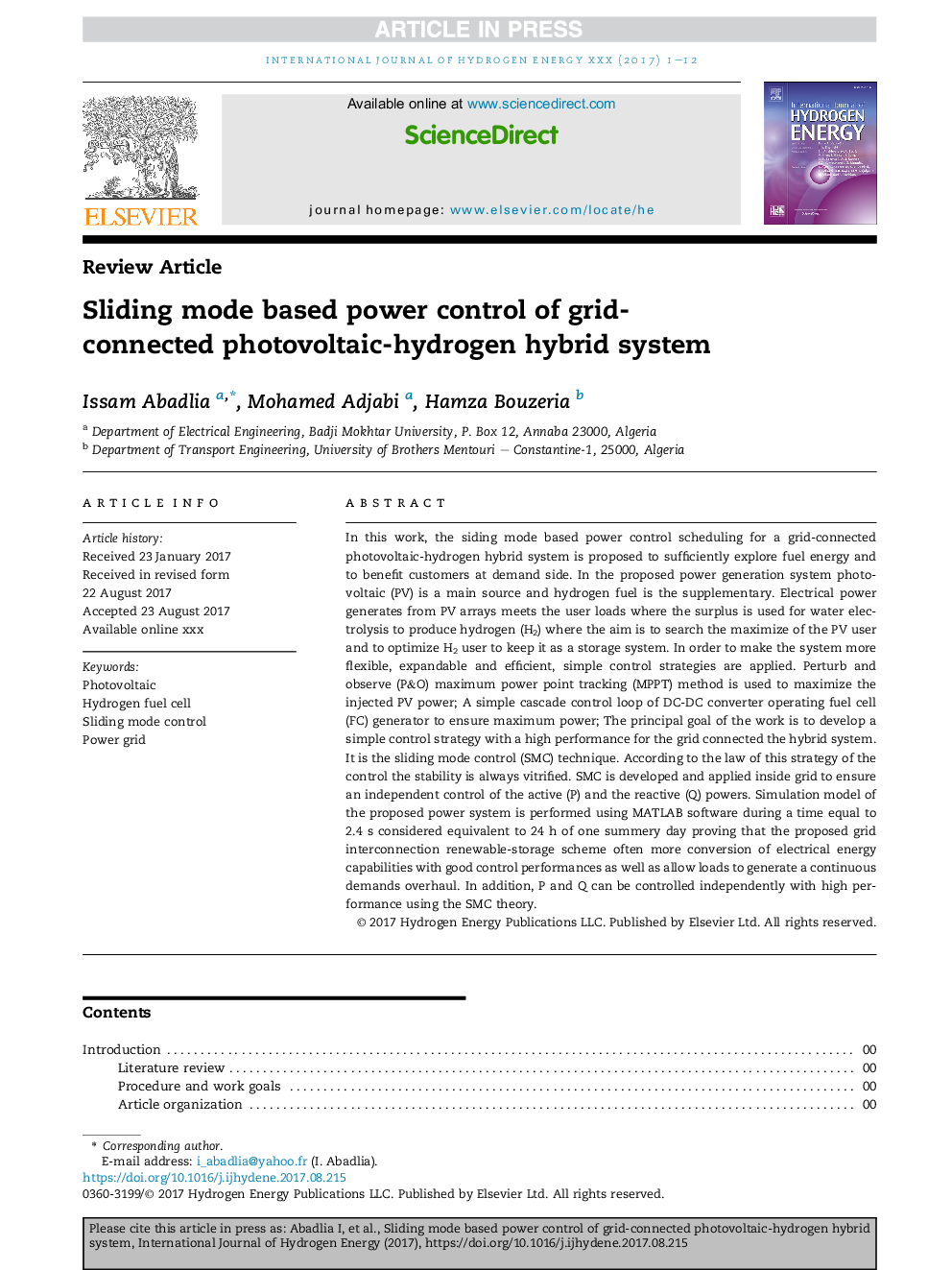| کد مقاله | کد نشریه | سال انتشار | مقاله انگلیسی | نسخه تمام متن |
|---|---|---|---|---|
| 7709332 | 1497330 | 2017 | 12 صفحه PDF | دانلود رایگان |
عنوان انگلیسی مقاله ISI
Sliding mode based power control of grid-connected photovoltaic-hydrogen hybrid system
ترجمه فارسی عنوان
کنترل قدرت مبتنی بر کشویی سیستم ترکیبی فتوولتائیک-هیدروژن متصل به شبکه
دانلود مقاله + سفارش ترجمه
دانلود مقاله ISI انگلیسی
رایگان برای ایرانیان
کلمات کلیدی
فتوولتائیک، سلول سوخت هیدروژن، کنترل حالت کشویی، شبکه برق،
موضوعات مرتبط
مهندسی و علوم پایه
شیمی
الکتروشیمی
چکیده انگلیسی
In this work, the siding mode based power control scheduling for a grid-connected photovoltaic-hydrogen hybrid system is proposed to sufficiently explore fuel energy and to benefit customers at demand side. In the proposed power generation system photovoltaic (PV) is a main source and hydrogen fuel is the supplementary. Electrical power generates from PV arrays meets the user loads where the surplus is used for water electrolysis to produce hydrogen (H2) where the aim is to search the maximize of the PV user and to optimize H2 user to keep it as a storage system. In order to make the system more flexible, expandable and efficient, simple control strategies are applied. Perturb and observe (P&O) maximum power point tracking (MPPT) method is used to maximize the injected PV power; A simple cascade control loop of DC-DC converter operating fuel cell (FC) generator to ensure maximum power; The principal goal of the work is to develop a simple control strategy with a high performance for the grid connected the hybrid system. It is the sliding mode control (SMC) technique. According to the law of this strategy of the control the stability is always vitrified. SMC is developed and applied inside grid to ensure an independent control of the active (P) and the reactive (Q) powers. Simulation model of the proposed power system is performed using MATLAB software during a time equal to 2.4Â s considered equivalent to 24Â h of one summery day proving that the proposed grid interconnection renewable-storage scheme often more conversion of electrical energy capabilities with good control performances as well as allow loads to generate a continuous demands overhaul. In addition, P and Q can be controlled independently with high performance using the SMC theory.
ناشر
Database: Elsevier - ScienceDirect (ساینس دایرکت)
Journal: International Journal of Hydrogen Energy - Volume 42, Issue 47, 23 November 2017, Pages 28171-28182
Journal: International Journal of Hydrogen Energy - Volume 42, Issue 47, 23 November 2017, Pages 28171-28182
نویسندگان
Issam Abadlia, Mohamed Adjabi, Hamza Bouzeria,
